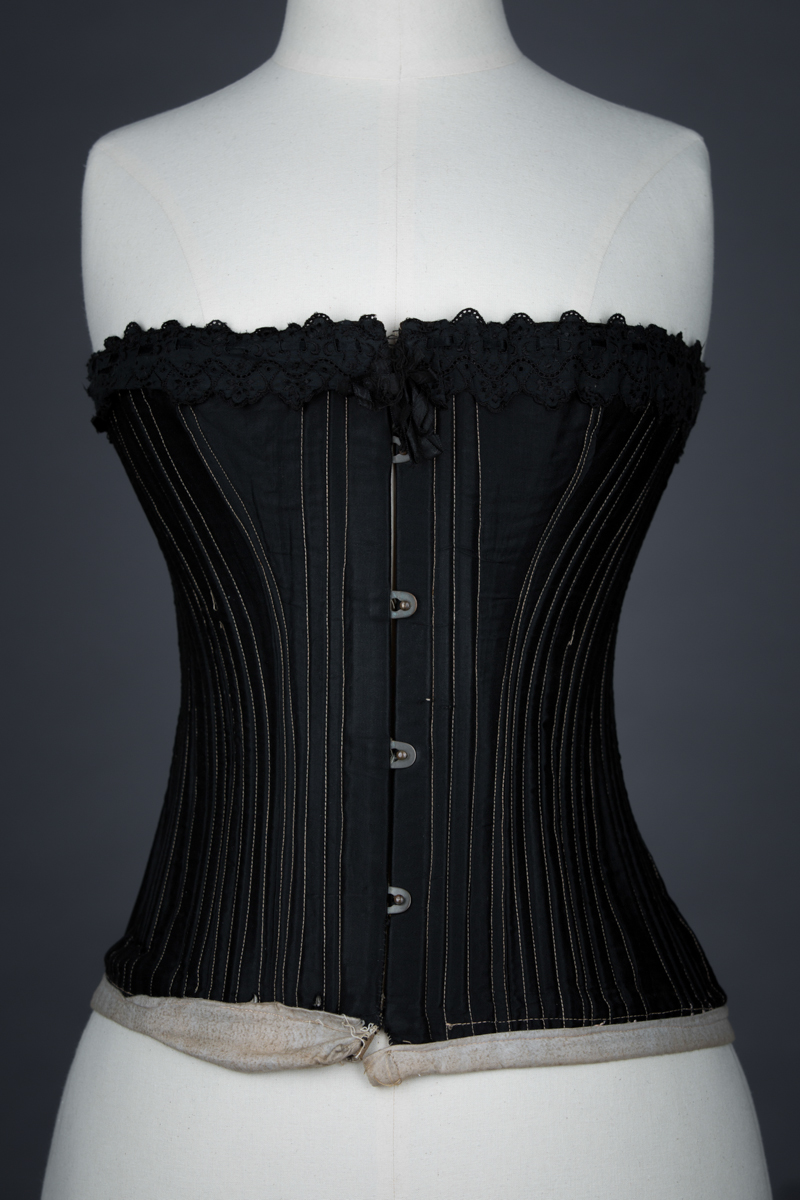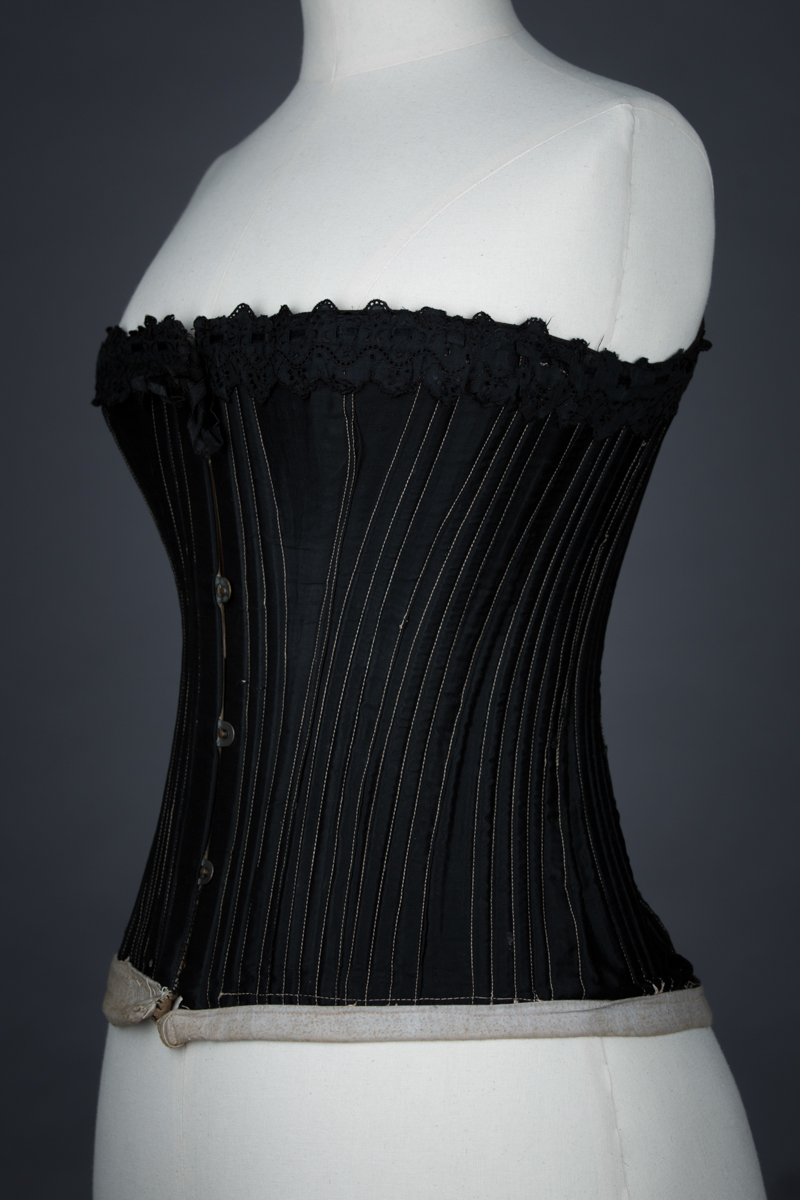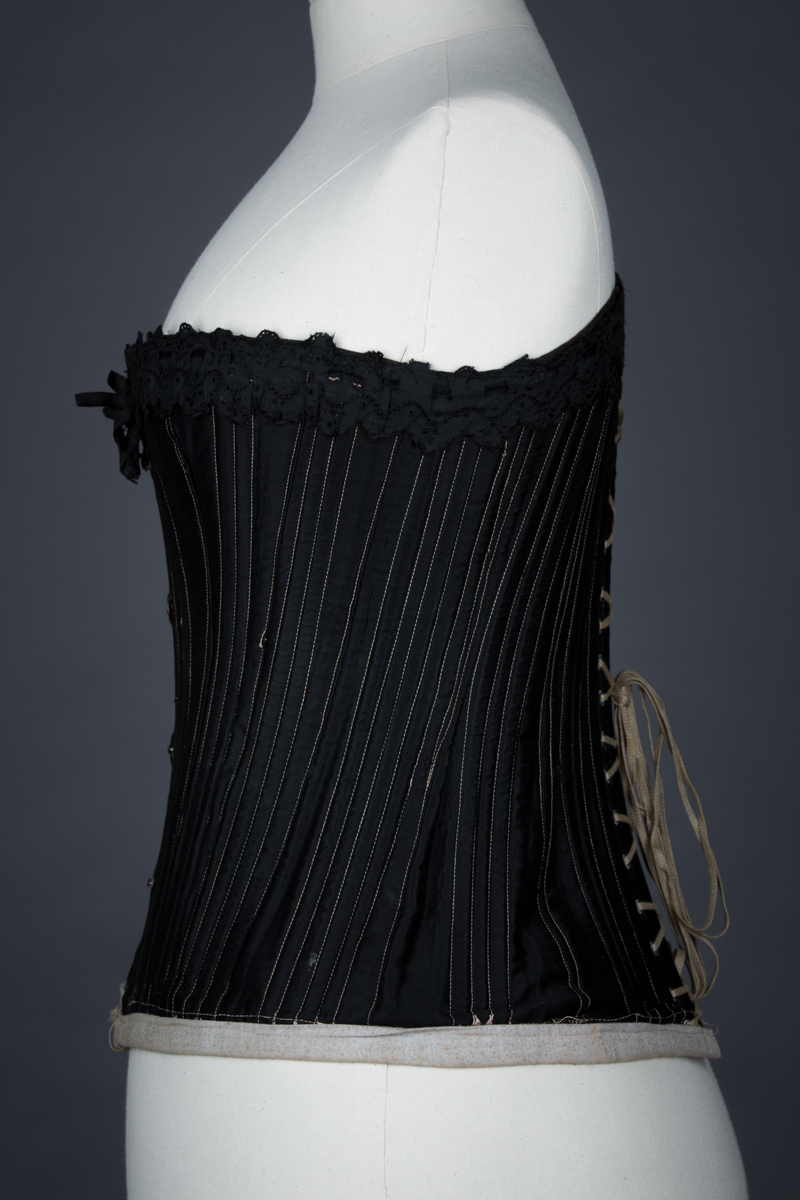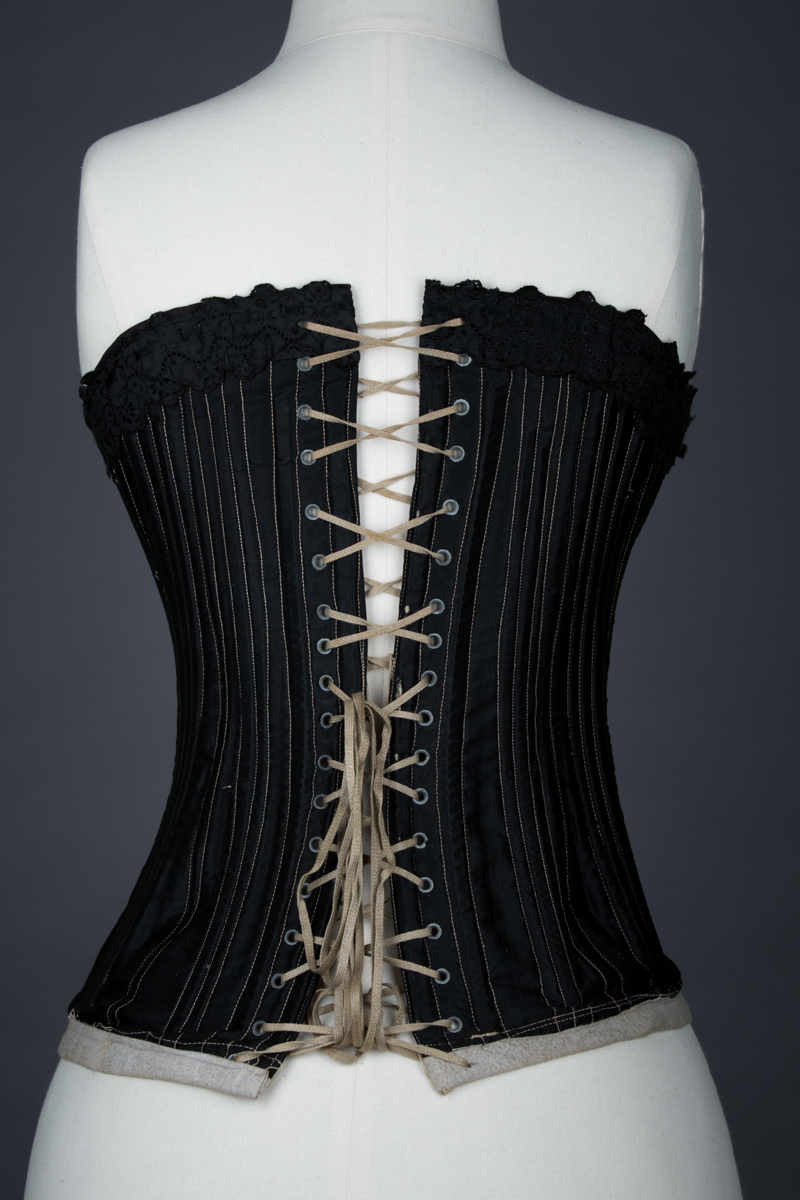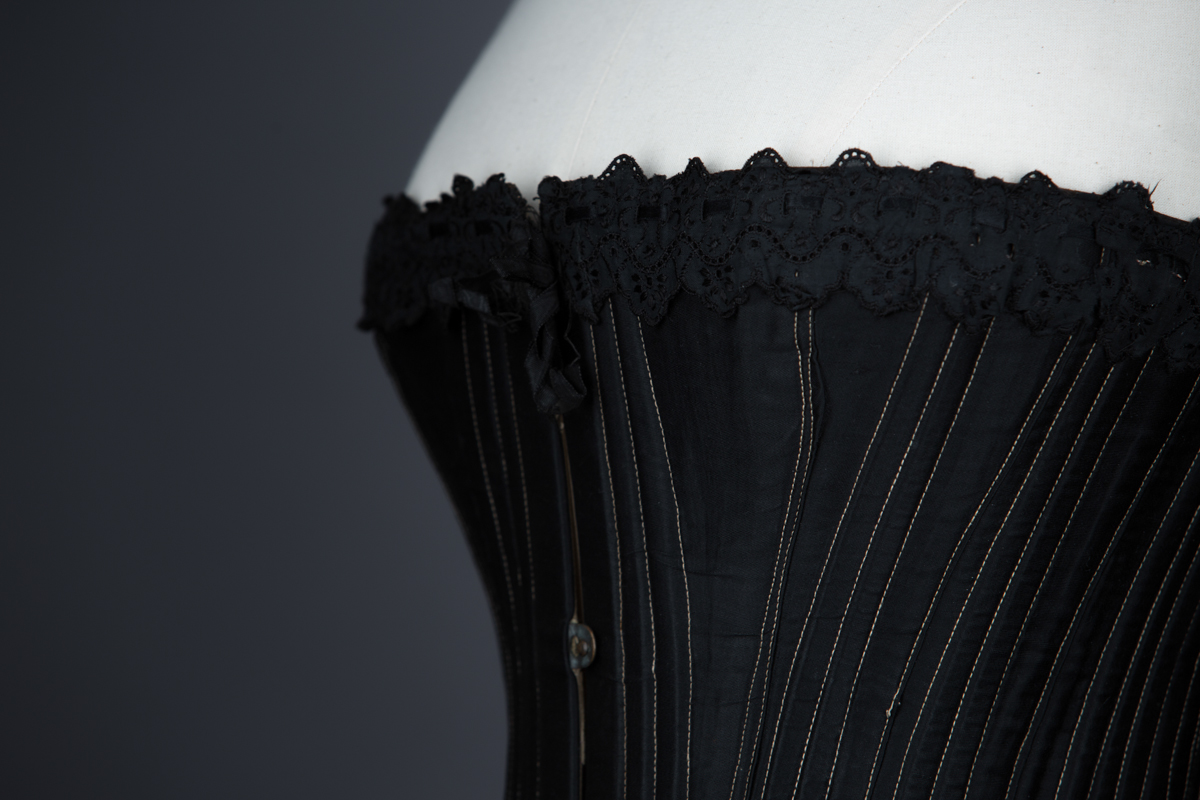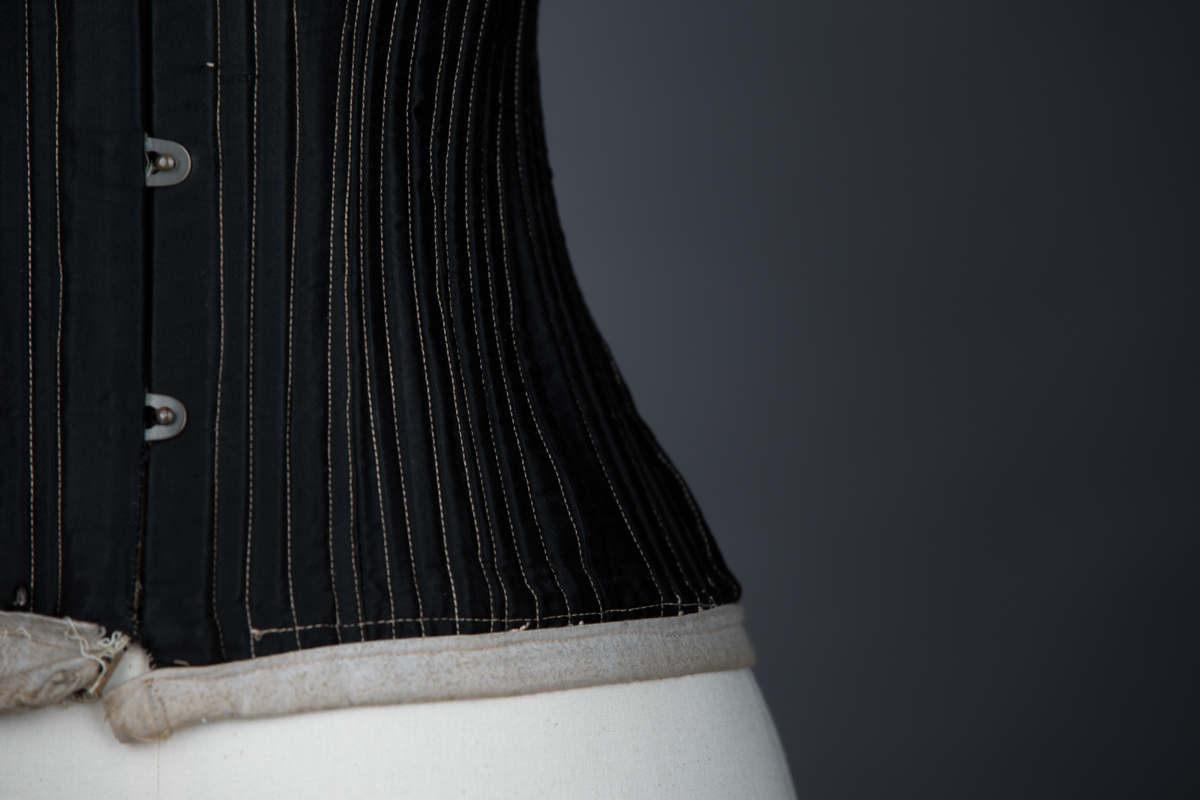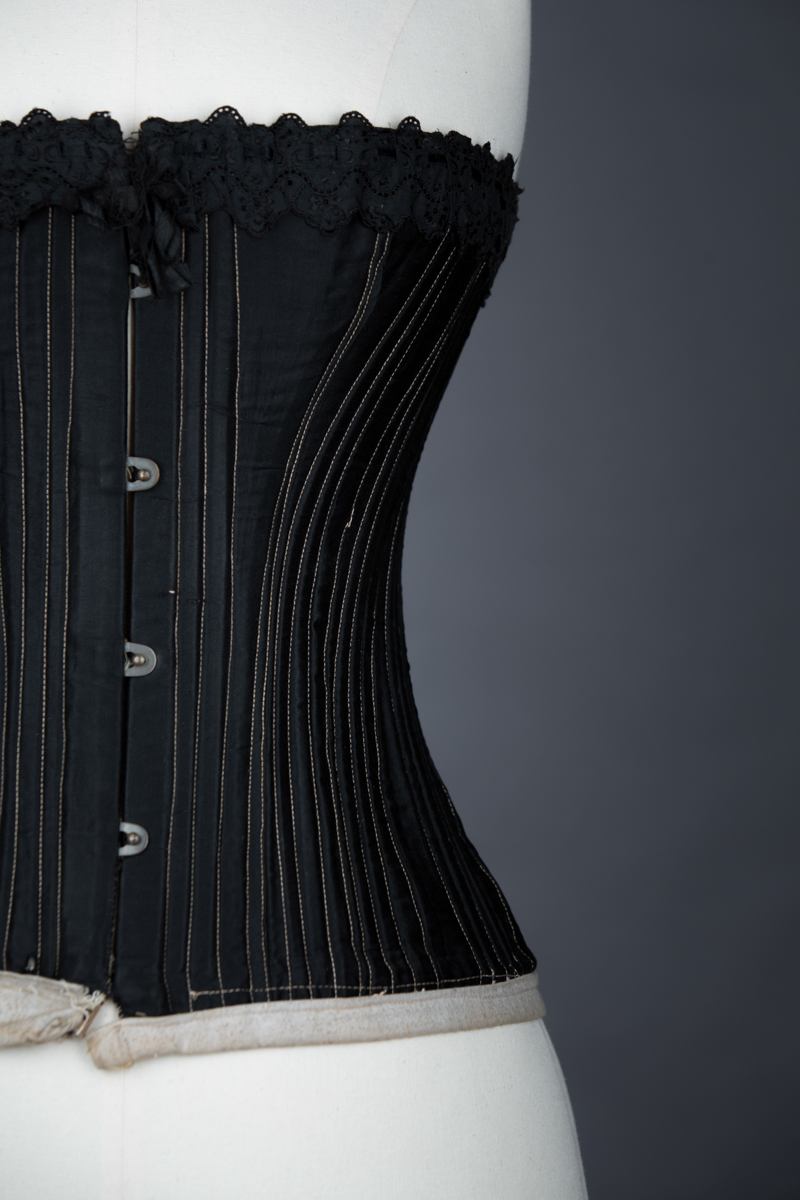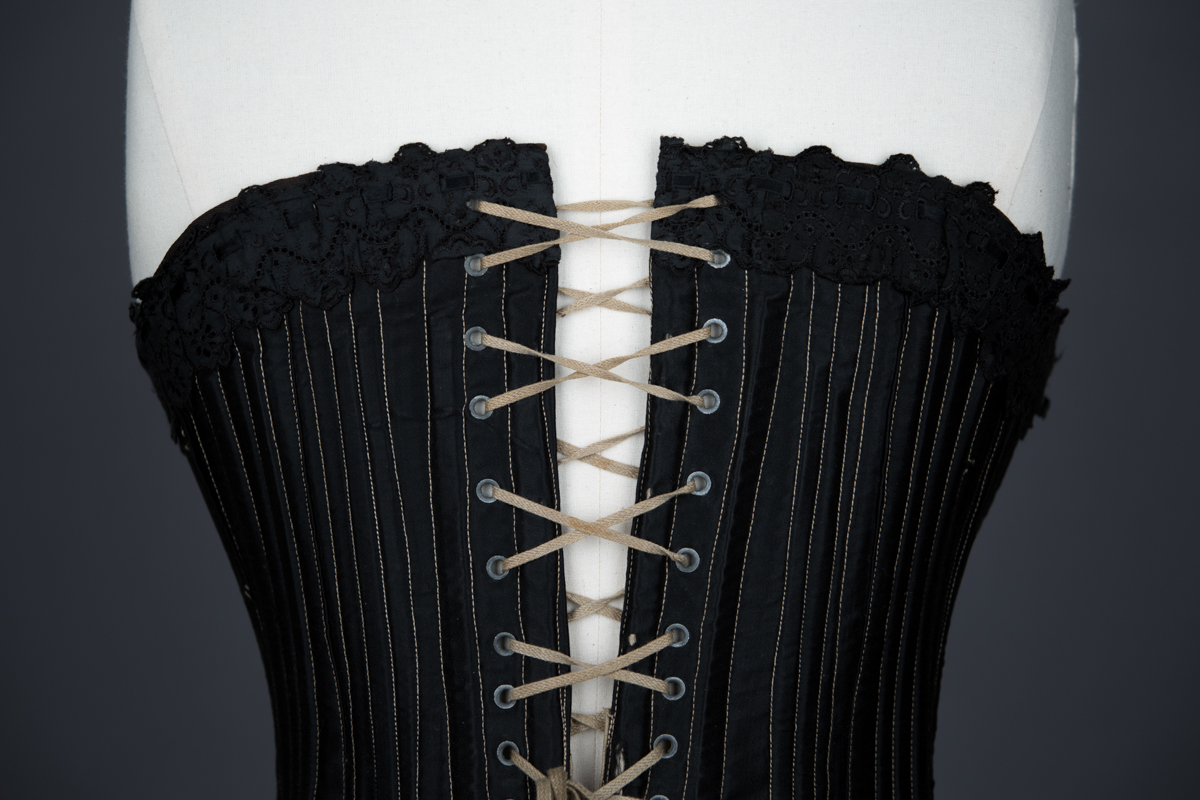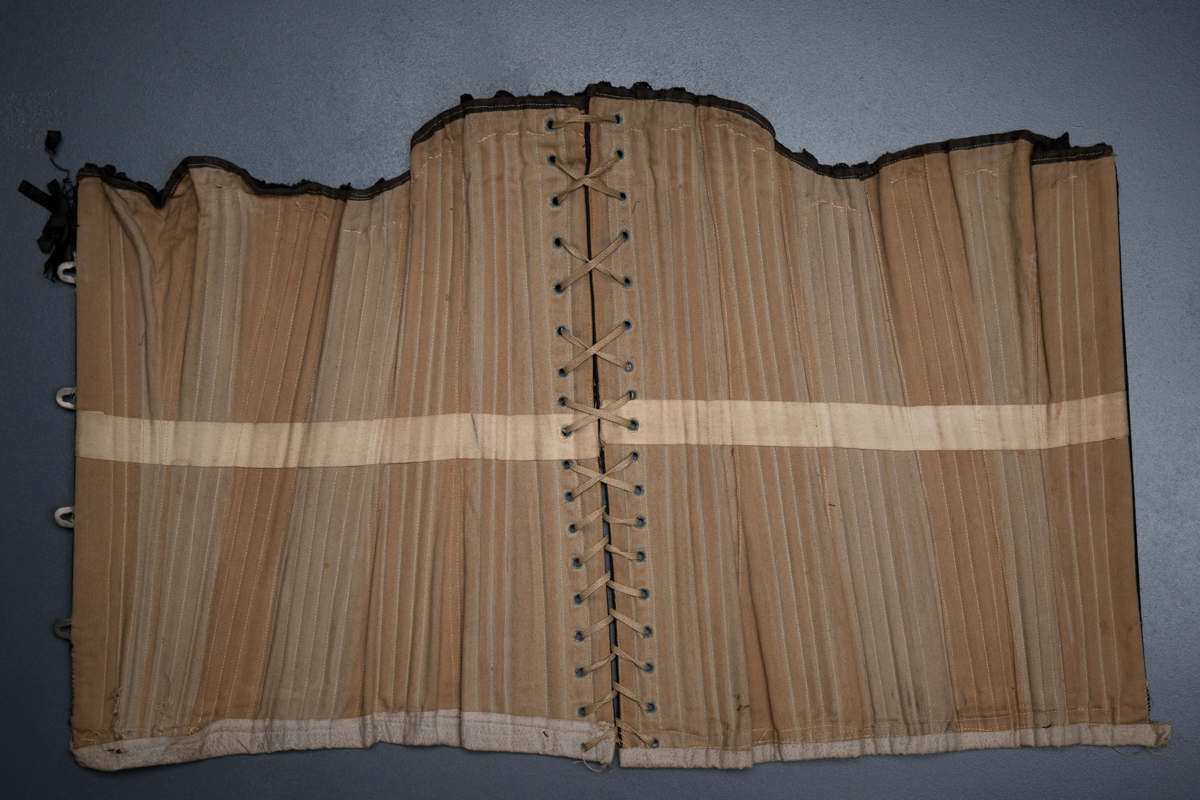Date: c. 1900s
Origin: Great Britain
Fabric: Cotton
Brand: Custom made
This corset was likely a working woman’s corset, due to its gentle shape and numerous repairs and alterations. The body of the garment is constructed with an outer layer of sateen black cotton and an interior drab coutil. The panels are all vertically patterned, with all bones sandwiched in stitched channels between the two fabric layers. A cotton twill waist tape has been sewn into the interior of the garment at a slight diagonal curve, anchored into the seam stitching.
The garment is extensively boned, exclusively in baleen of varying weights. A few channels appear to have been unpicked on the interior with boning removed, perhaps for comfort reasons if the bone had snapped. The top edge of the corset is bound in a narrow black cotton tape, and it is likely that this finishing was also used for the bottom edge originally. The bottom edge finishing has been changed to a wide beige cotton strip, perhaps to replace the original finishing that disintegrated through wear. There have been numerous hand sewn repairs, including re-enforcing the stitching around the busk, re-enforcing the replaced bottom binding, flossing embroidery style re-enforcement to the bone channels (hidden underneath the top line trim) and darning to holes on the exterior fabric.
The top line trim is a black cotton broderie anglaise with a black silk ribbon slot. This was added retrospectively to the corset and has been hand sewn on. Although the corset is machine sewn, there are numerouis inaccuracies to the stitching, suggesting that it was potentially home sewn. The garment fastens with a heavy weight 4 loop and pin busk at the front, with 1 part eyelets at the back with the original lacing.
From the collection of Karolina Laskowska

